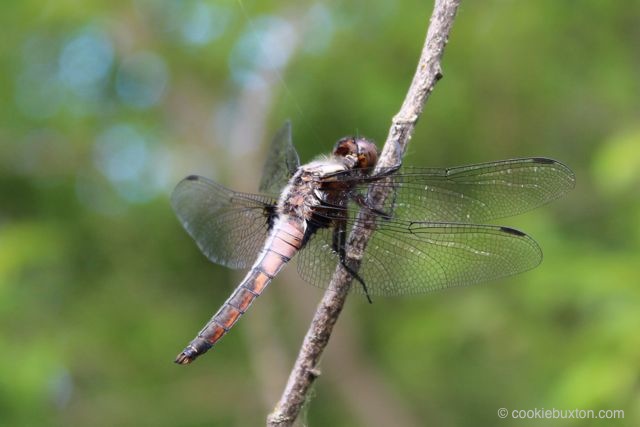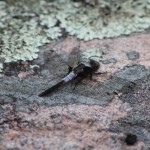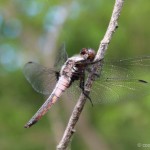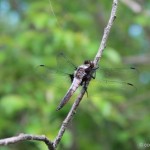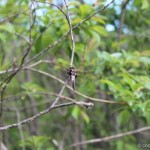Chalk-fronted Corporal Dragonfly
Ladonna (Libellula) Julia. Chalk-fronted Corporal Dragonfly.
Dragonflies are among my favourite insects, and the chalk-fronted corporal dragonfly is certainly a sturdy and handsome specimen. The word “corporal” suits the look of this compact, agile, and fast flier.
This species is just over 4 cm in length (1.6 inches in imperial measurement). Fossil records show that, in early times in the earth’s history, going back roughly 300 million years to the Paleozoic period, the wingspan on some dragonflies reached three-quarters of a metre in length (the largest fossil on record being 29.5 inches). That creates an awe-inspiring image for me. The largest dragonflies in modern times are found in Hawaii, where one of the species (Anax strenuous) has a 19.1 cm (7.5 inch) wingspan.
Dragonflies are predators, though harmless to humans. In the insect order, they are named Odonata, or “toothed ones ” (from the Greek word “odon” meaning tooth). Close up views show that that the labium, or lower lip, is, in fact, “toothy.” Dragonflies rely on their labium to grab hold of and secure their prey, which they then eat using their mandibles (they have one upper pair of mandibles and two below).
From the photos of the chalk-fronted corporal, one can see the dragonfly’s three body parts – the head, thorax, and abdomen.
I made use of my recently purchased copy of Dragonflies of the North Woods, by author and photographer Kurt Mead, to identify the chalk-fronted corporal dragonfly. This book, filled with great information and wonderful photographs, is a handy field guide (194pp). It is published as a title within the North Woods Naturalist Series issued by Kollath & Stensaas Publishing, Minnesota. I am thrilled to have this excellent resource.
The photographs of the chalk-fronted corporal posted here on cookiebuxton.com were taken in June 2013 in Manitoba’s eastern boreal forest region, close to Lake Brereton. While I did not have the privilege of having one land on me, author Mead describes this type of dragonfly as being a rather social creature, and mentions a time when one sat comfortably on his shoulder while it chewed on a mosquito captured in flight.
To enlarge and view images in the gallery, click on any photograph; to advance, click on the right side of the image.
Photographs and text: NK
Copyright: cookiebuxton.com
Location: Whiteshell Provincial Park, Manitoba
Photo ID: 1401_161 to 1401_164
Sources: Dragonflies of the North Woods, various dragonfly websites
